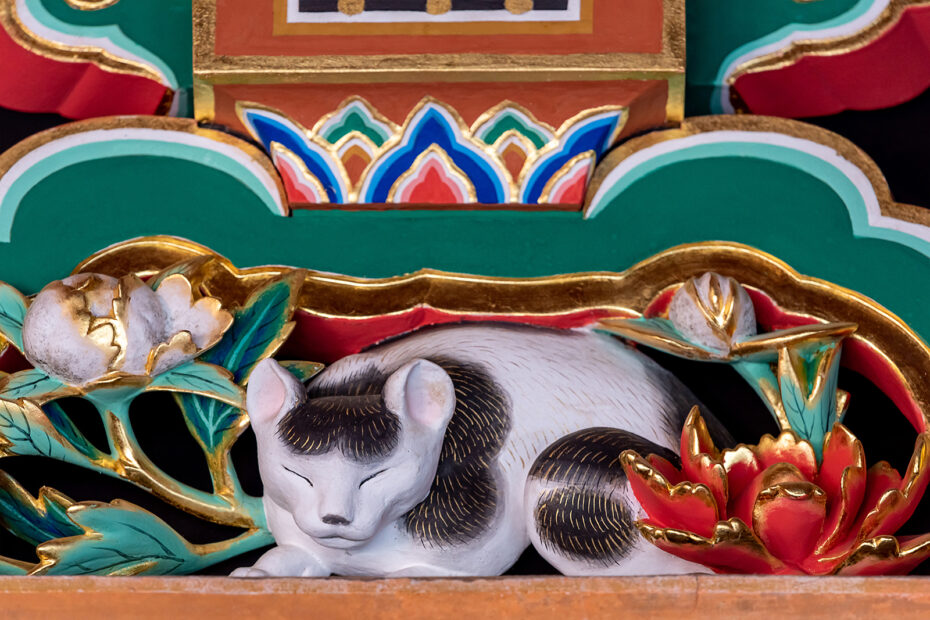The Tosho-gu Shrine in Nikko, Japan, is a UNESCO World Heritage site. The shrine is home to the mausoleum for a ruler of the Tokugawa dynasty (1603-1867) which was centered at its capital in Edu, modern-day Tokyo. The site includes a five-story pagoda, elaborately decorated storehouses for the ruler’s bulging sacks of rice, the praying hall for Buddhist ceremonies and the tomb of the ruler himself.
Colorfully painted carvings decorate the buildings, among them The Three Wise Monkeys with which we are familiar (“hear no evil, speak no evil, see no evil”). However, for the Japanese, the most famous carving is nemuri-neko (The Sleeping Cat). The cat is peacefully at rest while sparrows, its natural prey, are perched on a nearby lintel completely unmolested. The amicable harmony between the cat and the birds is meant to convey a goal humankind should pursue: peace.
Harmonious co-existence is a worthy goal for people who live in crowded societies with sometimes contentious neighbors. Like the sleeping cat, Christians make the attempt to live side-by-side with others peacefully. St. Paul instructs us: Live in harmony with one another . . . if it is possible, as far as depends on you, live at peace with everyone (Romans 12). This aspirational aspect of Christian life reflects, and is motivated by, our relationship with God. Since we have been justified through faith, we have peace with God though our Lord Jesus Christ (Romans 5).
(The Lutheran Evangelical Christian Church [Japan] is a member of the Confessional Evangelical Lutheran Conference – www.celc.info).
Find this interesting? Share it!
Steve Petersen – www.worldmissionsouvenirs.com
